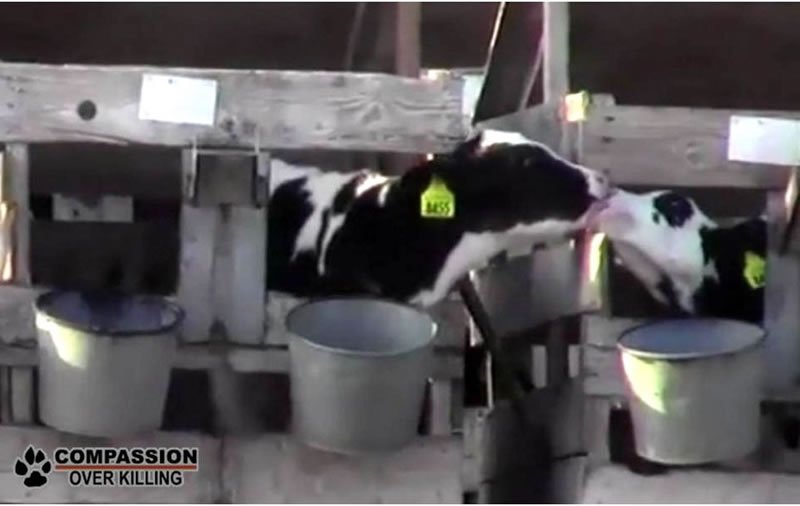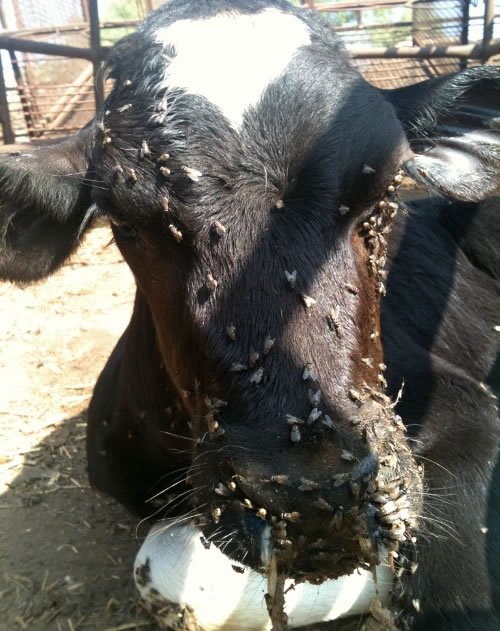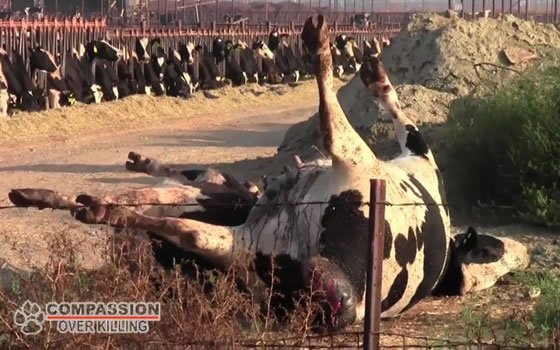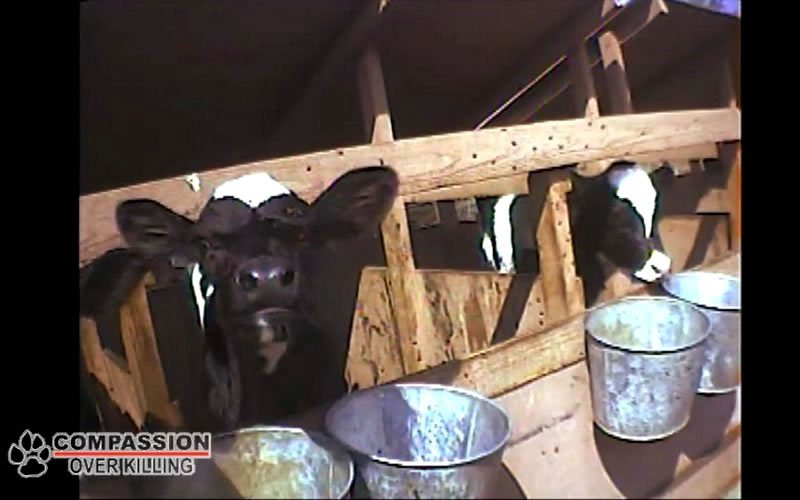UPDATE: Class Action Settlement: U.S. Dairy Industry to Pay $52 Million in Price-Fixing Conspiracy that Killed Cows and Cheated Consumers.
National Milk Producers Federation and Other Dairy Industry Groups Accused of Antitrust Violations
Class-action complaint alleges an industry-wide scheme to raise the price of milk by killing more than 500,000 young cows
On Monday, Sept. 26, 2011, law firm Hagens Berman Sobol Shapiro, LLP filed a class action lawsuit on behalf of consumers alleging that various dairy companies and trade groups—including the National Milk Producers Federation, Dairy Farmers of America and Land O’Lakes—combined to form Cooperatives Working Together (CWT) in order to engage in a price fixing-scheme that inflated the price of milk.
According to the complaint, this scheme has so far resulted in more than $9.5 billion of unfairly and illegally obtained profits.
Dairy Price-Fixing: Case Background
CWT says it works to “strengthen and stabilize milk prices.” Its members collectively produce and sell more than 70 percent of the milk consumed in the U.S. The lawsuit claims that, through CWT, the defendants carried out a price-fixing plot that effectively raised the price of milk through tactics that will likely continue to affect the price of milk for years to come.

As the facts in the case set forth, between 2003 and 2010, more than 500,000 young cows were slaughtered under CWT’s so-called “dairy herd retirement” program in a concerted effort to reduce the supply of milk and thus inflate the price. The complaint further alleges that the program, which primarily bought out smaller farmers and instructed them to kill their entire dairy cow herds, unfairly increased the profits of agribusiness giants.
CWT’s own economic analysis not only boasts about the program’s effects on the industry but confirms that milk prices did in fact increase as a result of its efforts — to the tune of $9.5 billion in additional revenue. See chart for details.
Animal Outlook’s research into CWT’s “dairy herd retirement” program led to the discovery of a possibly illegal price-fixing scheme that kills cows, cheats consumers and lines the pockets of agribusiness giants. Animal Outlook’s legal department conducted the initial research and development of the case. Leading class-action law firm Hagens Berman Sobol Shapiro, LLP represents the plaintiffs.
Hagens Berman would like to consumers who purchased milk or milk products from 2004 to the present. Consumers can contact the firm by calling (206) 623-7292 or by emailing CWT@hbsslaw.com. Visit HBSSLaw.com/CWT for more details.
Additionally, Animal Outlook has released video footage and photos offering a glimpse inside California dairy factory farms. This video sheds light on the realities of today’s dairy factory farms, including crowded dirt lots filled with long lines of cows, calves kept in filthy, barren, fly-infested conditions, and animals being treated as mere milk-producing machines. As this video demonstrates, conditions on today’s dairy farms are a far cry from the happy cow imagery the industry would like us to believe.
One of the most effective steps we can take to protect farmed animals is simply to choose meat-, egg- and dairy-free foods. Learn more about the painful realities kept hidden behind the closed doors of factory farms and discover delicious animal-friendly foods by visiting TryVeg.com.
Price-Fixing: Beyond the Dairy Industry
This lawsuit is not the first time animal agribusiness has been accused of antitrust violations. In 2010, Land O’Lakes agreed to pay $25 million to settle a class action lawsuit filed against the United Egg Producers and its members for allegedly engaging in a price fixing scheme. That case alleges egg producers were encouraged to reduce their flock size—to reduce egg supply and inflate prices—as part of a program that was disguised as an animal welfare initiative based on the use of a misleading label on egg cartons. Land O’Lakes is also a defendant in this class-action lawsuit.
Dairy Price-Fixing Lawsuit – the Defendants
- National Milk Producers Federation (NMPF): dairy trade group that manages defendant Cooperatives Working Together, and its membership produces the majority of milk sold in the U.S.
- Cooperatives Working Together (CWT): dairy industry group whose members produce over 70% of the dairy sold in the United States. Developed by the NMPF, its membership includes major dairy industry players including the other defendants.
- Dairy Farmers of America (DFA): largest dairy cooperative in the country, contributing member of CWT. DFA is currently involved in antitrust litigation filed by milk producers accusing the cooperative of using a range of techniques to undermine competition.
- Land O’Lakes, Inc.: second-largest dairy cooperative in the country, contributing member of CWT. In June 2010, agreed to pay $25 million to settle a class action lawsuit filed against the United Egg Producers and its members for allegedly engaging in an egg price fixing scheme.
- Dairylea Cooperative Inc.: fifth-largest dairy cooperative in the country, contributing member of CWT.
- Arig-Mark, Inc.: dairy cooperative, contributing member of CWT
Dairy Price-Fixing Timeline
2003: Defendants begin its so-called “herd retirement” program, which sends entire herds of young dairy cows to slaughter in order to limit the supply of milk and increase prices. In its first year, “approximately 33,000 cows will be culled due to the herd retirement program.”
2004: CWT assesses the 2003 cull as having a “sizeable impact” on prices, and performs a second round of culling of approximately 51,700 cows from 378 farmers.
2005: A third round of “herd retirement” takes place, sending “approximately 66,000 cows” to early slaughter.
2006: CWT commissions an economic analysis of the program’s success to date, which concludes that all U.S. dairy farmers have benefitted from the program: the “cumulative impact…is $1.97 billion in additional producer revenue.”
2007: A fourth cull takes place, “representing 54,000 cows.” Further economic analysis done, program continues.
2008: Fifth and sixth rounds of herd retirements are completed – 85,958 young cows are killed.
2008: Class action lawsuit is filed against United Egg Producers, Land O’Lakes, and other individual egg producers for alleged price-fixing scheme.
2009: Three separate rounds of “herd retirements” take place – more than 200,000 young cows are killed. CWT’s commissioned economic analysis shows milk prices in 2009 “would have averaged $1.66 less had the CWT program not been in business.”
May 2010: CWT announces its tenth round of herd retirement, to build on the “positive momentum” of the program so far. Bids from farmers will be accepted through the end of June.
June 2010: Land O’Lakes announces $25 million settlement out of price-fixing lawsuit.
July 2010: CWT announces accepted bids for its tenth “dairy herd retirement” killing 34,442. This is CWT’s final cull.
October 2010: After an annual meeting, CWT announces the discontinuation of its “herd retirement” program.
June 2011: June, National Milk Producers Federation states that CWT is no longer performing herd retirements.
September 2011: Class action lawsuit is filed against CWT and other dairy groups claiming an illegal $9.5 billion price fixing scheme, accomplished by killing over 500,000 young cows.
September 2016: A class action settlement is reached, in which CWT and other dairy groups will pay $52 million to the affected class of millions of US consumers harmed by illegally inflated milk prices.








